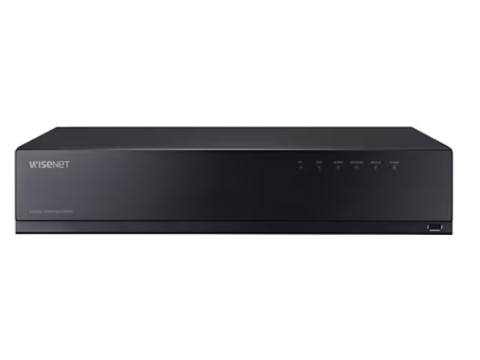DVRs for Surveillance Systems
For Analog, IP, and Hybrid Cameras
What’s the Deal?
Let’s be real—these days, a security cam setup without a recorder is like a car without a steering wheel. You need something to capture and store the footage. That’s where DVRs (digital video recorders) come in.
Competition in the surveillance tech world is crazy fierce, so even entry-level DVRs now pack enough features to handle a decent home, small biz, or office setup. Let’s break it down.
Types of DVRs
DVRs are like the backbone of any cam system. Here’s the lineup:
Analog DVRs
- Old-school tech that’s still kicking with upgrades like AHD, CVI, and TVI.
- Basically, they handle analog signals but process them digitally.
IP Recorders (NVRs)
- Fully networked, all-digital vibes.
- Great for scalability, but gotta plan ahead since adding channels later can be a pain.
Hybrid Recorders
- The jack-of-all-trades. Mix and match analog and IP cams for a gradual system upgrade.
IP DVRs – The High-Tech Choice
IP recorders are perfect if you’re building a digital fortress. But heads up—adding more cams means investing in pricey models with extra channels. Want to go big from the start? That’s cool, but don’t blow your budget if you don’t need it.
Pro Tip: Small setups don’t always need a standalone DVR. Sometimes, a video server or a decent PC with the right software can get the job done.
Analog DVRs – Oldies but Goodies
Most analog setups these days use AHD or CVI tech. These bad boys still handle basic analog cams, and many can plug into your LAN or connect online through P2P or the cloud. Just don’t expect them to handle huge setups—16 cams max is the norm.
Hybrid Recorders – The Best of Both Worlds
Wanna switch from analog to IP without dropping a fortune all at once? Hybrid recorders are your MVPs. They support both systems, but check the fine print—your mix of analog and IP cams might be limited by the device’s specs.
Surveillance Without a Recorder?
Sure, it’s possible, but it’s not exactly plug-and-play. Here’s how:
Direct-to-Monitor Connection
- Works for one cam, but juggling multiple zones? You’ll need extra gear like quads (to split the screen) or multiplexers (to manage more cams). Not ideal for 2025 standards.
Cloud-Based IP Systems
- Skip the recorder entirely and upload footage straight to the cloud. Super handy if you’ve got solid internet.
Hooking Up Your Cams
The golden rule: the cam and the recorder gotta speak the same "language." Analog cams need analog DVRs, IP cams need IP recorders.
Analog Setup
- Use coax cables or twisted pair wiring.
- Each cam needs its own line—no shortcuts here.
IP Setup
- Twisted pair cabling works, but you can hook up multiple cams on one line using network switches. Bonus points for PoE (Power over Ethernet) if your gear supports it.
Choosing the Right DVR
Here’s the lowdown:
- Number of Channels: Plan for a few extras in case you add cams later.
- Resolution: Match the DVR to your cams—don’t let lower specs bottleneck your setup.
- Storage: Bigger hard drives = deeper archives.
Bonus Features:
- Audio recording, remote access via your phone, and user-friendly controls are all nice-to-haves.

